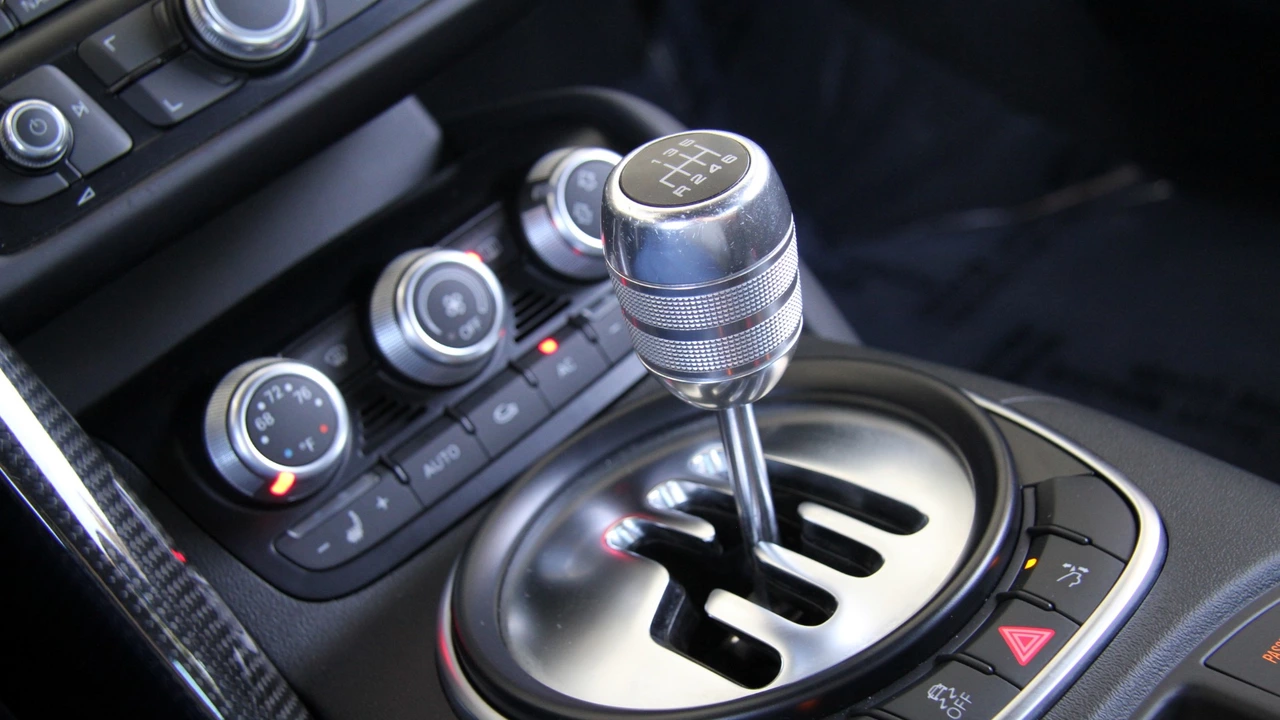Embrace the Manual Shift: Control Freak’s Heaven
Let's begin with the basics: a manual transmission vehicle, affectionately known as ‘three pedals’ or ‘stick’, offers a degree of control that automatics simply cannot match. While a machine choosing gears for you can be convenient (especially when stuck in gridlock traffic), there's a certain visceral connection between driver and automobile that can only be achieved when we're the ones in charge of shifting gears.
First, let's debunk a common myth: automatic transmissions aren't inherently faster than manuals, despite a popular belief otherwise. Flappy paddle gearboxes might change gears at lightning speed, but raw shift times are only a fraction of the bigger picture when it comes to racing.
Automatic transmissions are programmed for a balance of comfort and efficiency, which typically means early upshifts and late downshifts. This keeps your engine out of its powerband - where it makes the most power and torque - and could end up slowing you down on a track. On the other hand, manual transmissions allow you to dictate when gear changes occur, meaning you can keep your car in its powerband for longer, potentially resulting in faster lap times.
Racing is not just about speed, but about rhythm and connection, too. And if you ever wanted to feel like Lewis Hamilton taming a mechanical beast, then a manual is your best bet.
A Sturdy Tool: Manual’s Surprising Durability
Here's a secret unearthed by years of car nerdom: manual transmissions are, for the most part, simpler and more robust than their automated counterparts. This is especially true when you get under the hood of performance vehicles. Autos, with their labyrinthine fluid pathways and delicate clutches, have a lot more that can potentially go wrong, especially under the strain of high-speed, high-RPM track driving.
Manual cars, however, are a different beast entirely. Their simpler design, with gears directly engaging each other rather than being mediated by fluid, means they can soak up a lot more abuse before giving up the ghost. And when they do start grumbling—a grating noise here, a sticking clutch there—they're generally easier (which usually equates to cheaper) to repair or rebuild than automatic transmissions.
This is not to say manuals are invincible. They come with their own set of issues—burnt out clutches, worn synchros, and a myriad of other possible maladies. But for an out-and-out track car, a manual transmission is more likely to survive the rigors of high revs, hard shifts, and wear and tear than an automatic.
Learning Curve: The Art and Joy of Shifting Gears
Now, I must concede that driving a manual, especially at the limit, is a daunting task compared to mindlessly stomp-and-steer automatics. Except it's not just about upshifting and downshifting. There's a whole host of advanced techniques — heel-toe downshifting, rev-matching, double clutching — that you can (and, arguably, should) learn if planning to take your car around a circuit.
While a bitter pill to swallow at first, the steep learning curve of a manual transmission becomes a reward in itself once you start to get a handle on things. There's nothing quite like the satisfaction of nailing a perfect downshift as you barrel into a tight hairpin turn, or the adrenaline rush of banging through the gears on a straightaway. Moreover, it keeps you 100% engaged with both your car and the track at all times, constantly challenging you to make the most of each and every gear shift.
If you're new to manual transmissions, this might sound overwhelming. Rest assured, though, that each shifting technique brings with it a measurable increase in control and sense of connection with your car, transforming each racetrack lap into a symphony of gear changes.
Purist’s Delight: The Intangible Lure of Manual Transmissions
Finally, there's the romantic side of things. The allure of a stick shift goes beyond pure performance figures, challenging learning curves, or the reassurance of mechanical durability. It's about the indescribable enjoyment, the sheer driving pleasure that a manual car provides.
I'll never forget my first race in a manual car. I was driving an old Honda Civic around a small local track—nothing fancy, but boy, did it feel like I was in control of a roaring beast. The experience was raw and unfiltered. Each gear change was a battle, and each time I won that fight (mind you, there were a couple of lousy shifts causing some hearty laughter), it felt incredibly rewarding.
Driving a manual car well is an accomplishment. It's a testament to your skill and your understanding of the automobile. It feels good because it's hard, it's challenging, and it requires practice and finesse. This is something no automatic transmission can ever provide, no matter how technically brilliant or intuitively designed it might be.
In conclusion, if speed, control, durability, a steep but rewarding learning curve and, most importantly, pure unadulterated driving pleasure are the attributes you seek in a race car, then yes – the manual transmission is indeed better for racing. So, the next time you're in the market for a new track toy, you might want to give the three pedals another look.
